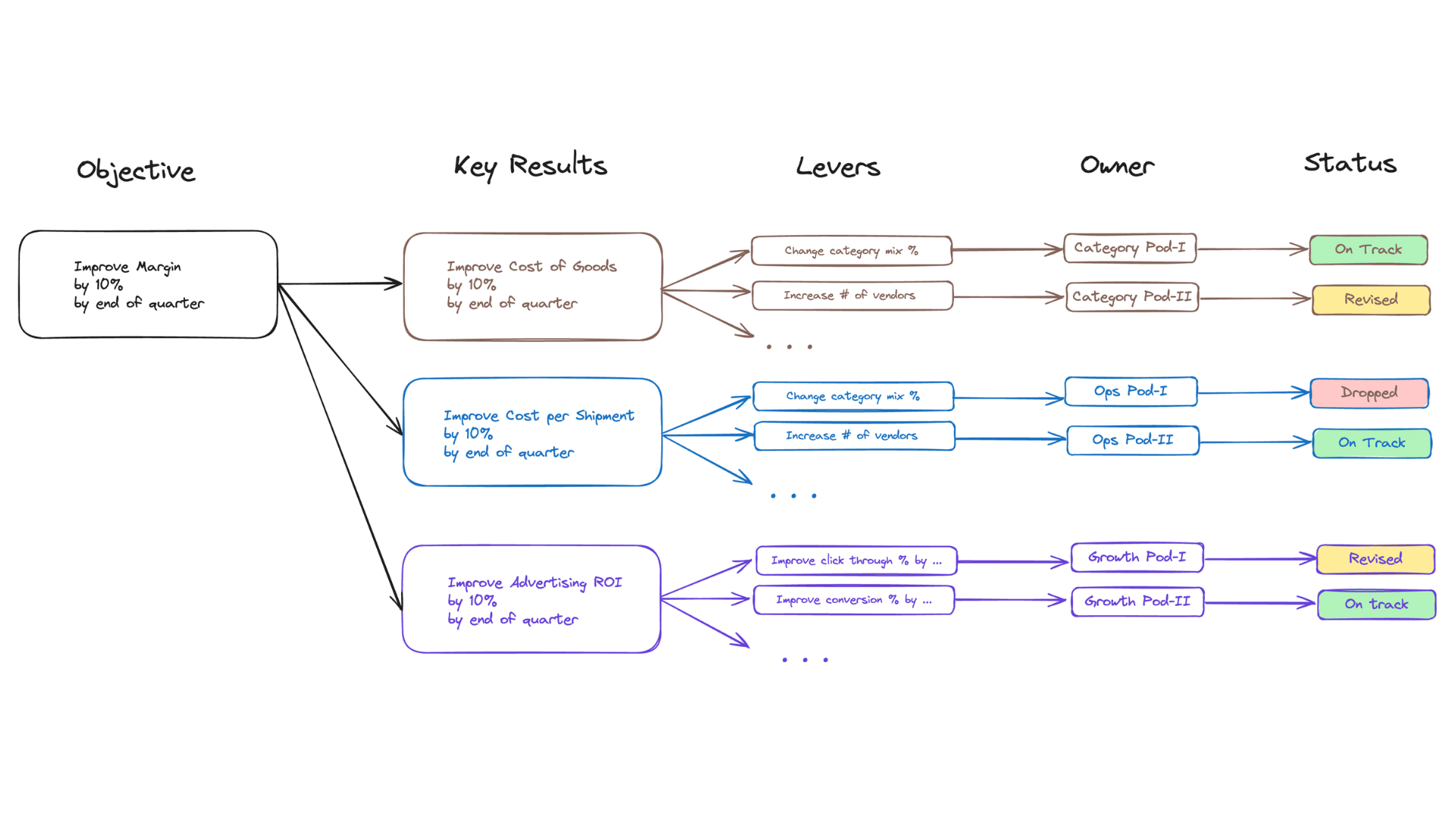How to Monitor and Adjust OKRs?
Monitoring and adjusting OKRs involves regularly reviewing set objectives and key results to assess progress, identify challenges, and make necessary changes.
This process is essential for businesses to stay agile and responsive to changing market conditions or internal dynamics.
It ensures that the OKRs remain relevant and aligned with the company’s evolving strategies and goals.

Example:
Let's say, GadgetGear, an online electronics retailer in India, sets an OKR to 'Increase market share in the smart home devices category by 20%'.
Midway through the period, they realize that a new competitor has entered the market, impacting their sales.
In response, GadgetGear adjusts its OKRs by shifting focus to customer retention and enhancing product range, realigning its strategy to the new market reality.
Explanation:
The monitoring process should be continuous, with regular check-ins and data analysis. It’s not just about tracking progress but also being prepared to recalibrate objectives or key results based on performance feedback and external factors.
For GadgetGear, the adjustment ensures that their efforts are not rendered ineffective by unforeseen market changes.